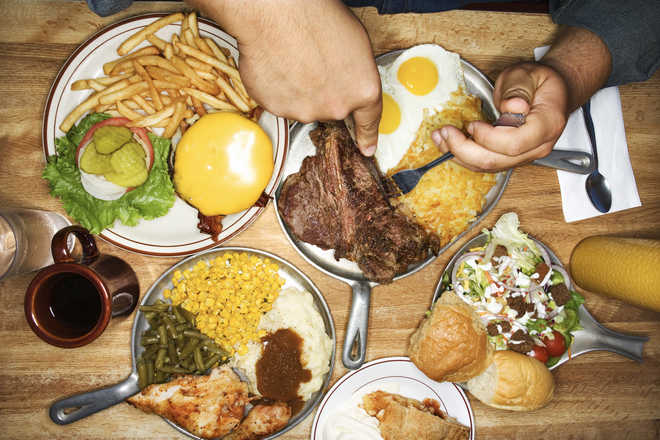
Photo source: Thinkstock
Washington
Obesity is associated with liver disease, finds a study published in Cell Metabolism journal.
A team led by Mitchell Lazar, MD, PhD, director of the Institute for Diabetes, Obesity, and Metabolism in the Perelman School of Medicine at the University of Pennsylvania, revealed a surprising relationship between two molecules - one that works to store fat and another that promotes fat burning for energy.
The team found that the molecules complement each other to maintain a healthy level of fat in the liver. When both molecules are removed from the liver, there is a swift buildup of toxic fats that causes an aggressive and lethal form of non-alcoholic steatohepatitis (NASH) in mice.
The findings are an important discovery that could inform animal models for studying obesity and new drugs that reverse or prevent liver damage stemming from overeating.
When fat enters the body after a meal, it's absorbed by the liver and either put away for safe storage in the form of triglycerides or it's immediately metabolized for energy. The decision to burn or store fat depends on a number of factors, but the study found that the enzyme histone deacetylase 3 (HDAC3) and another protein SREBP are two critical regulators of this decision.
Earlier studies from the Lazar lab and others showed that disruption of either regulator causes problems in the liver: When HDAC3 is deleted experimentally from this system, fat piles up in the liver, but toxic fat is sequestered as triglycerides and therefore is relatively better-tolerated. Alternately, take SREBP away, and toxic fats get burned up and converted to energy.
Take both away, and "the results are catastrophic," Lazar said. The mice had a dramatic inability to store triglycerides or burn excess fat safely in the liver.
"Based on what we first knew about these two molecules, we were expecting a tug of war that would fall somewhere in between if we took them both away, either too little fat or too much in the liver," Lazar said. "Instead, it led to an accumulation of toxic fat and a complete energy drain on the mice that caused inflammation, liver damage, and ultimately death." The two molecules are back-up systems for each other, rather than a balance, as the team previously thought.
"It's really two molecular pillars holding up a central 'building' to prevent liver toxicity," he added. "This work shows that on a normal fat diet these two molecules hold down the fort in the mice." Taking away HDAC3 and SREBP in animal models could mirror the breakdown in the liver for investigators to study obesity and related liver diseases.
"It's more of a physiological discovery than explaining a disease; however, there are practical and conceptual implications here," Lazar said.
"These findings could serve as a model, in a short and acute way, of toxicity of fat in the liver that we can use to look for drugs that target these molecules to reverse or stop the damage," he added. — ANI



























